
Dr. Yogendra Sharma
Seismic Hazard • GNSS & InSAR • Earthquake Modeling • AI & Bayesian Inversion
About Me
I am a postdoctoral researcher at NCKU specializing in crustal deformation, interseismic fault slip modeling,
and seismic hazard assessment. My research focuses on tectonically active zones such as the Himalayas,
Taiwan, and the Philippines. I integrate GNSS, InSAR, and advanced Bayesian and AI/ML techniques to
constrain fault kinematics and understand long-term earthquake behavior.
Research Interests
Geodesy, Earthquake Physics, Fault Mechanics, Interseismic Modeling, Machine Learning in Geosciences,
Probabilistic Inversion, Active Tectonics
Selected Publications
-
Sharma Y. et al. (2020), Spatial distribution of earthquake potential along the Himalayan arc —
[DOI]
-
Sharma Y. et al. (2023), Interseismic slip rate and fault geometry along the northwest Himalaya —
[DOI]
-
Sharma Y. et al. (2024), Kinematics of crustal deformation along the central Himalaya —
[DOI]
-
Sharma Y. et al. (2025), Fast report: Coseismic source model of the January 2025 Mw 6.1 Dapu earthquake —
[DOI]
Code & Data
GitHub: github.com/yogen1992
CV
Download my CV (PDF)
Contact
Email: yogenmaths2738@email.com
Contact: +886-0973634058
Sources
Researchgate: — [Link]
Linkedin: — [Link]
Google Scholar: — [Link]
Recent Highlight
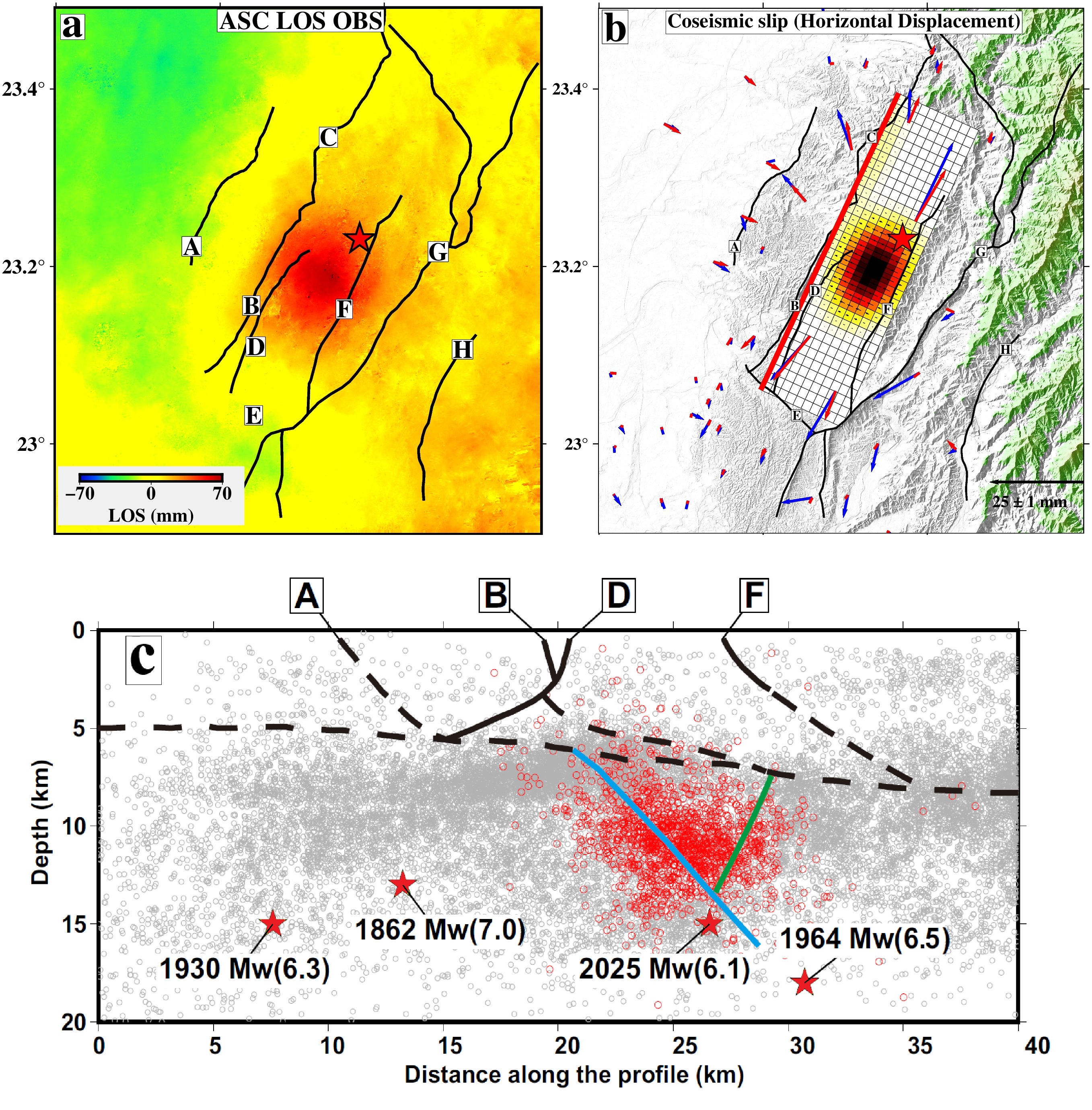
2025 Dapu Earthquake Source Model
The 2025 Mw ~6.1 Dapu earthquake in southwestern Taiwan provides new insights into the long-debated thin- vs. thick-skinned tectonics of the region. Joint GNSS–InSAR modeling and aftershock analysis reveal a dominant east-dipping reverse fault with ~40 cm of peak slip near 12 km depth. The seismic moment (1.49×10²⁵ dyne-cm) corresponds to Mw 6.08. The event likely activated both east- and west-dipping faults, highlighting a complex conjugate fault system beneath the fold-and-thrust belt. These findings indicate that basement-involved thick-skinned deformation plays a key role beneath the traditional thin-skinned décollement. Coulomb stress modeling further suggests increased stress near locked segments, pointing to the importance of continued geophysical monitoring for future hazard assessment.
View DOI →
Research Models
Interseismic Model (Himalaya)
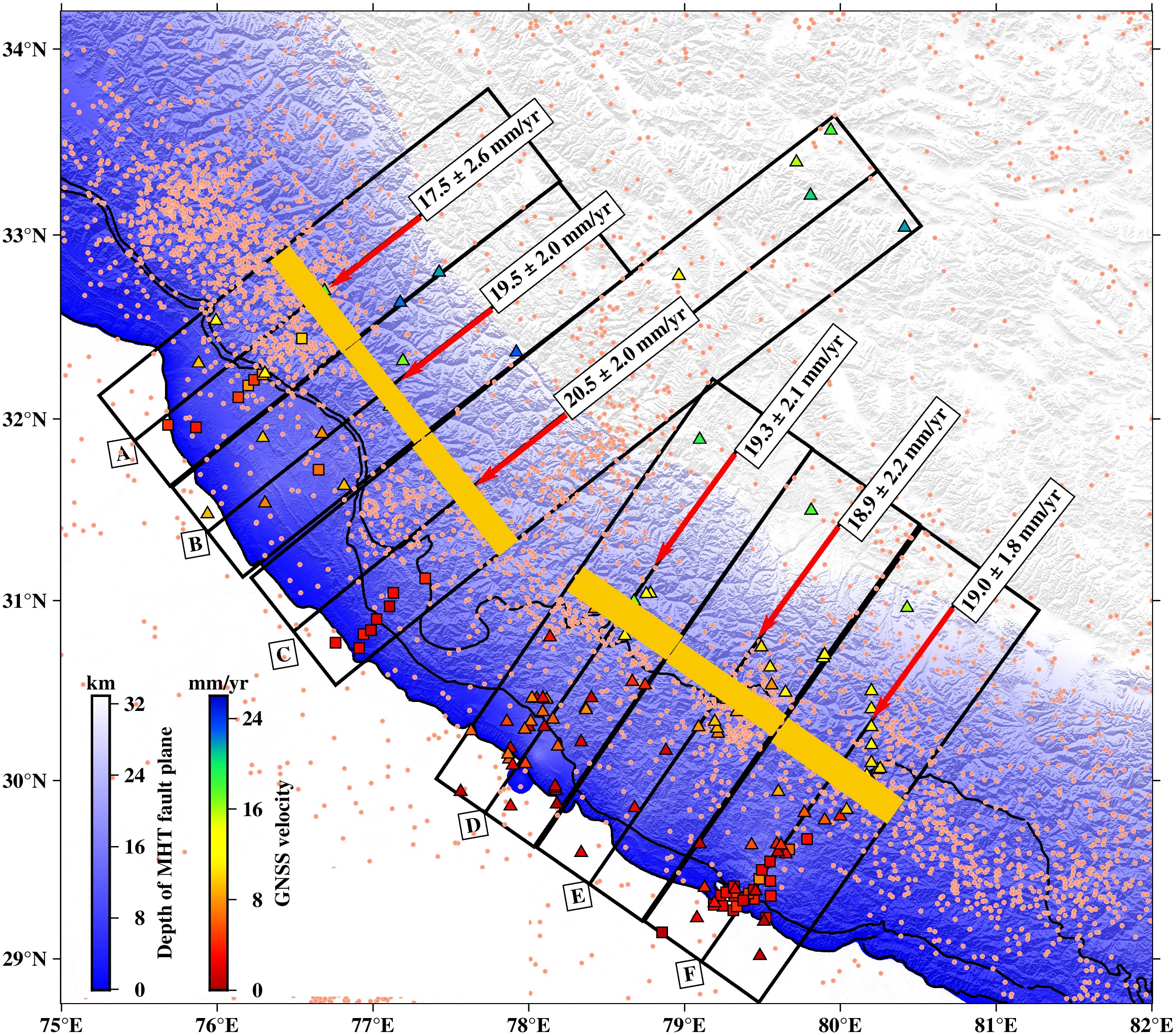
Characterizes interseismic fault locking using GNSS data. Bayesian inversion constrains slip deficit on the Main Himalayan Thrust.
Coseismic Model (Taiwan)
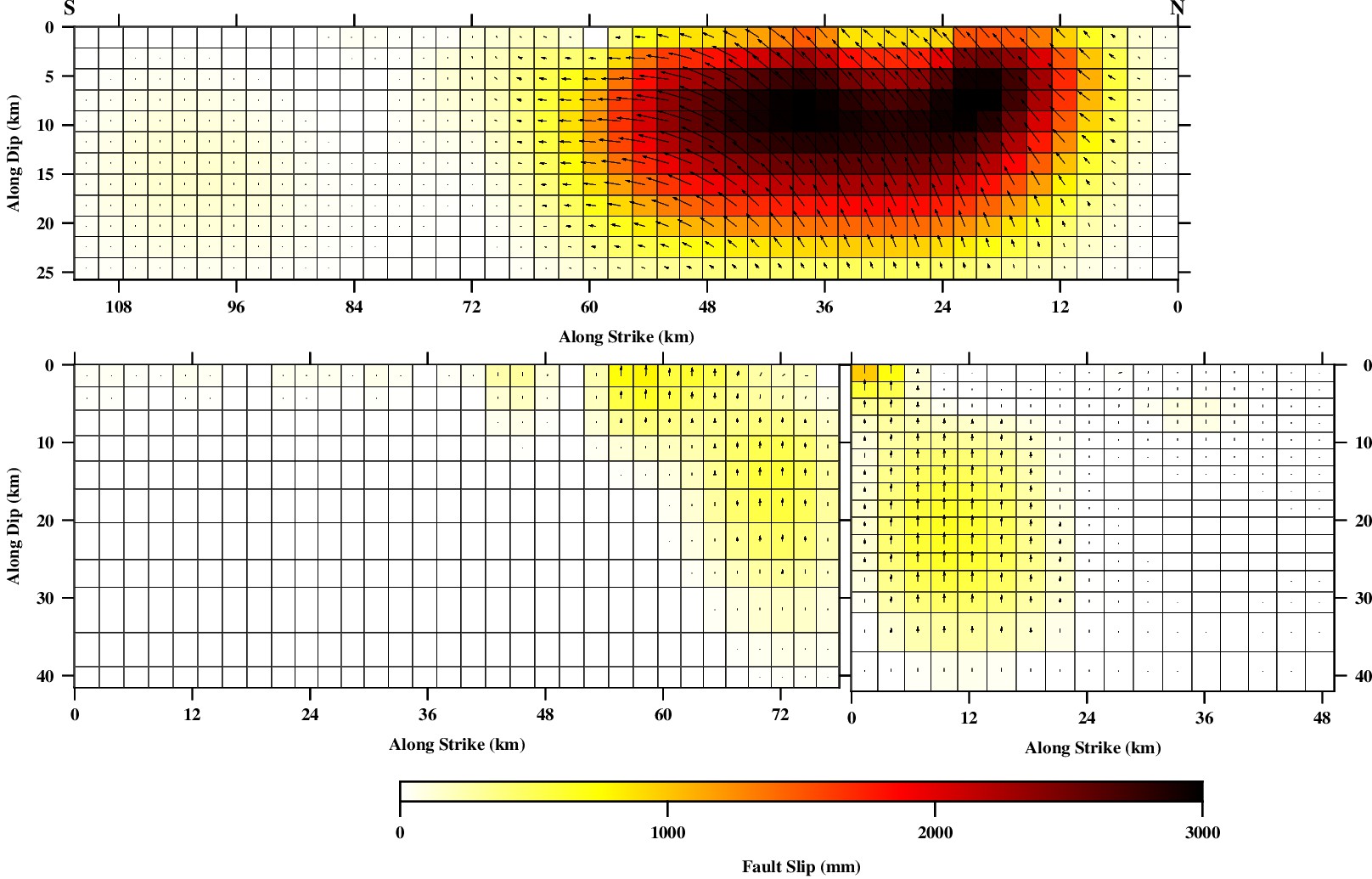
Reconstructs coseismic displacement fields from GNSS. Used to derive fault slip distribution post-earthquake.
Single-fault and Splay-fault model (Himalaya)
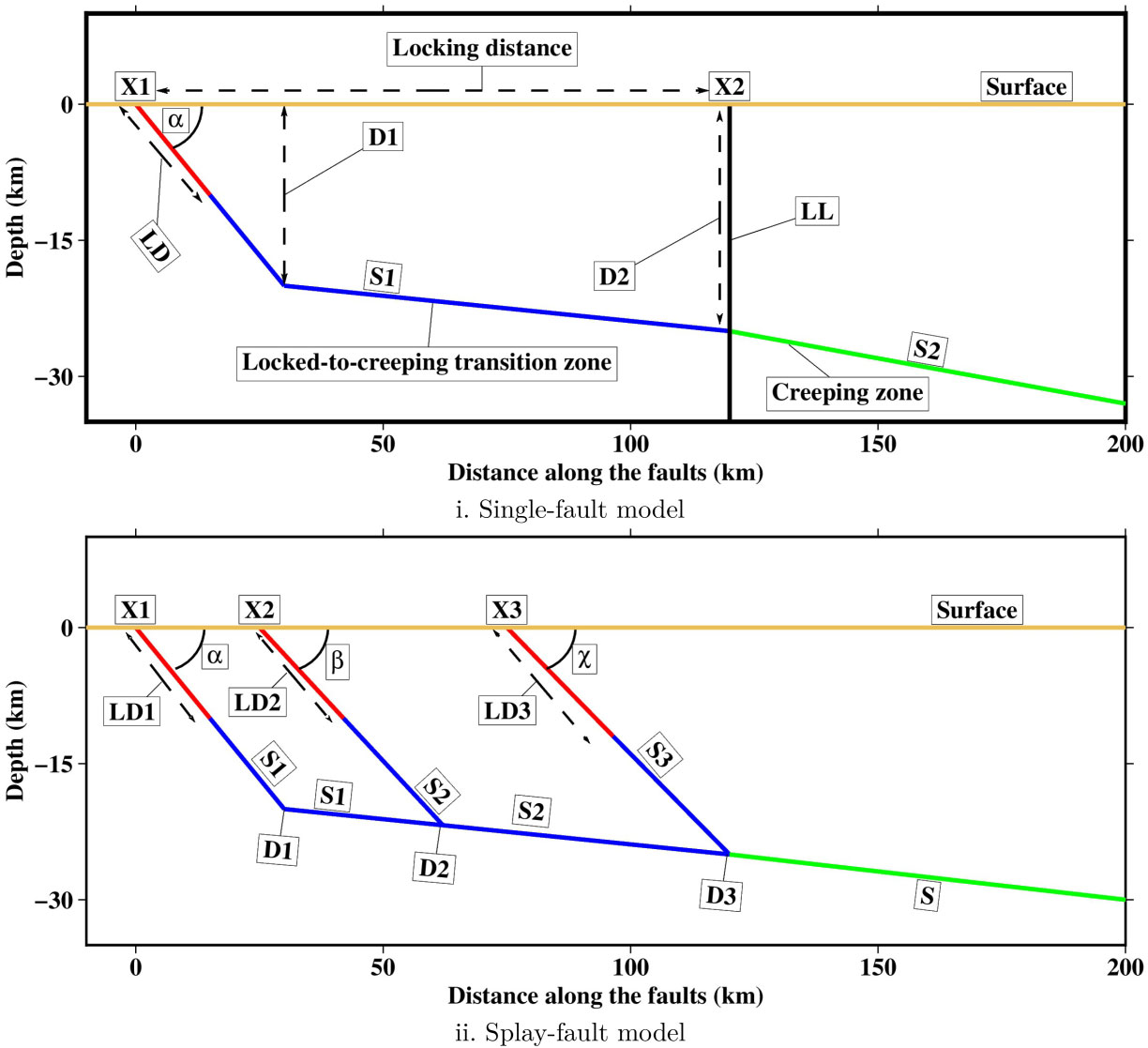
In the Himalayan context, the single-fault model simplifies deformation by assuming that most slip accumulates and releases along the Main Himalayan Thrust (MHT), treated as a single décollement surface beneath the range. While effective for broad-scale interseismic and coseismic analysis, it may not capture the complexity of near-surface deformation. In contrast, the splay-fault model incorporates secondary faults that branch upward from the MHT—such as the Main Frontal Thrust (MFT)—to represent better distributed strain, uplift, and surface rupture patterns. This model aligns more closely with geological and paleoseismic evidence in regions exhibiting foreland folding and frontal fault propagation.
Strain Rate Model
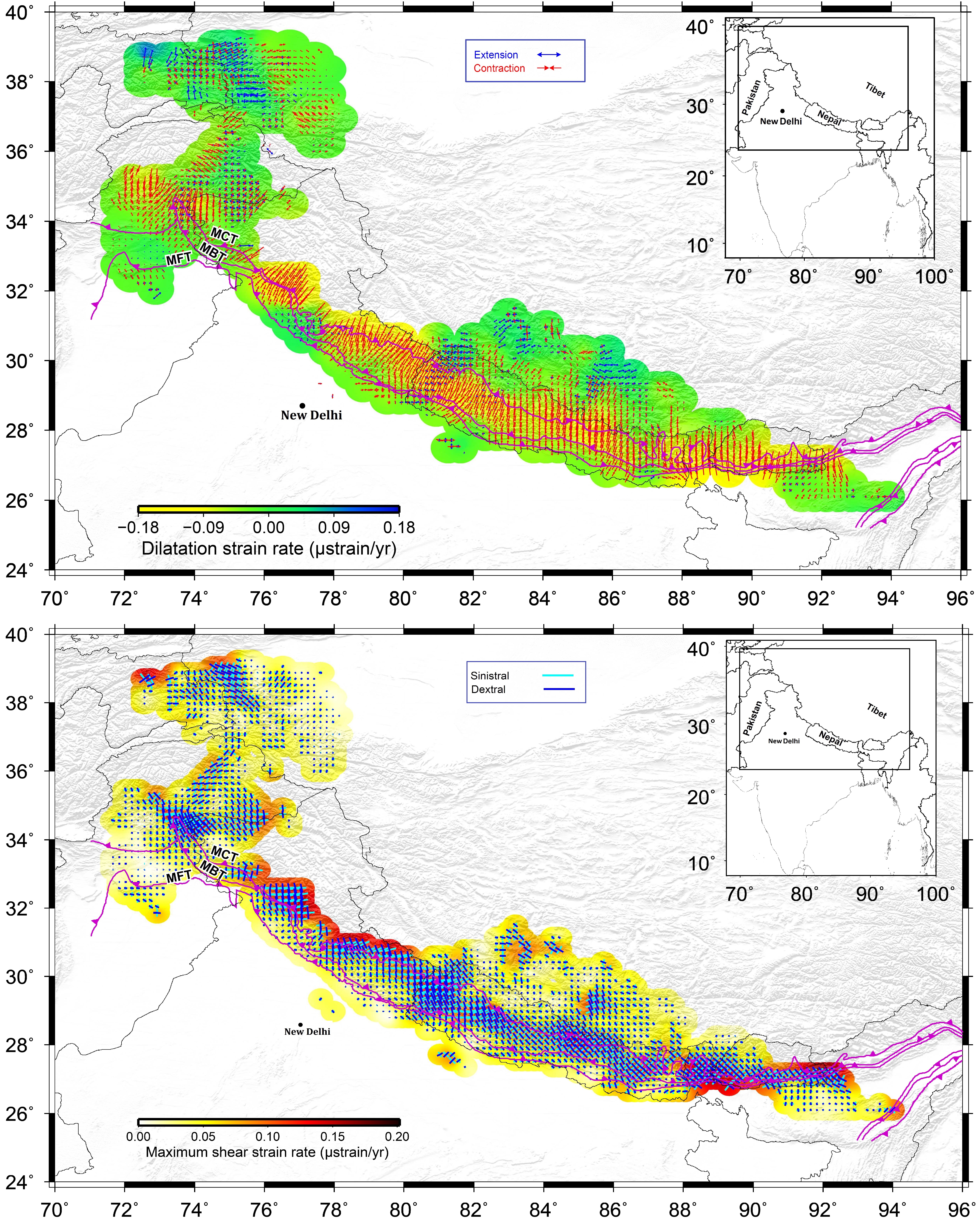
Derived from GNSS velocity gradients to reveal regions with high seismic strain accumulation.
Velocity Inversion
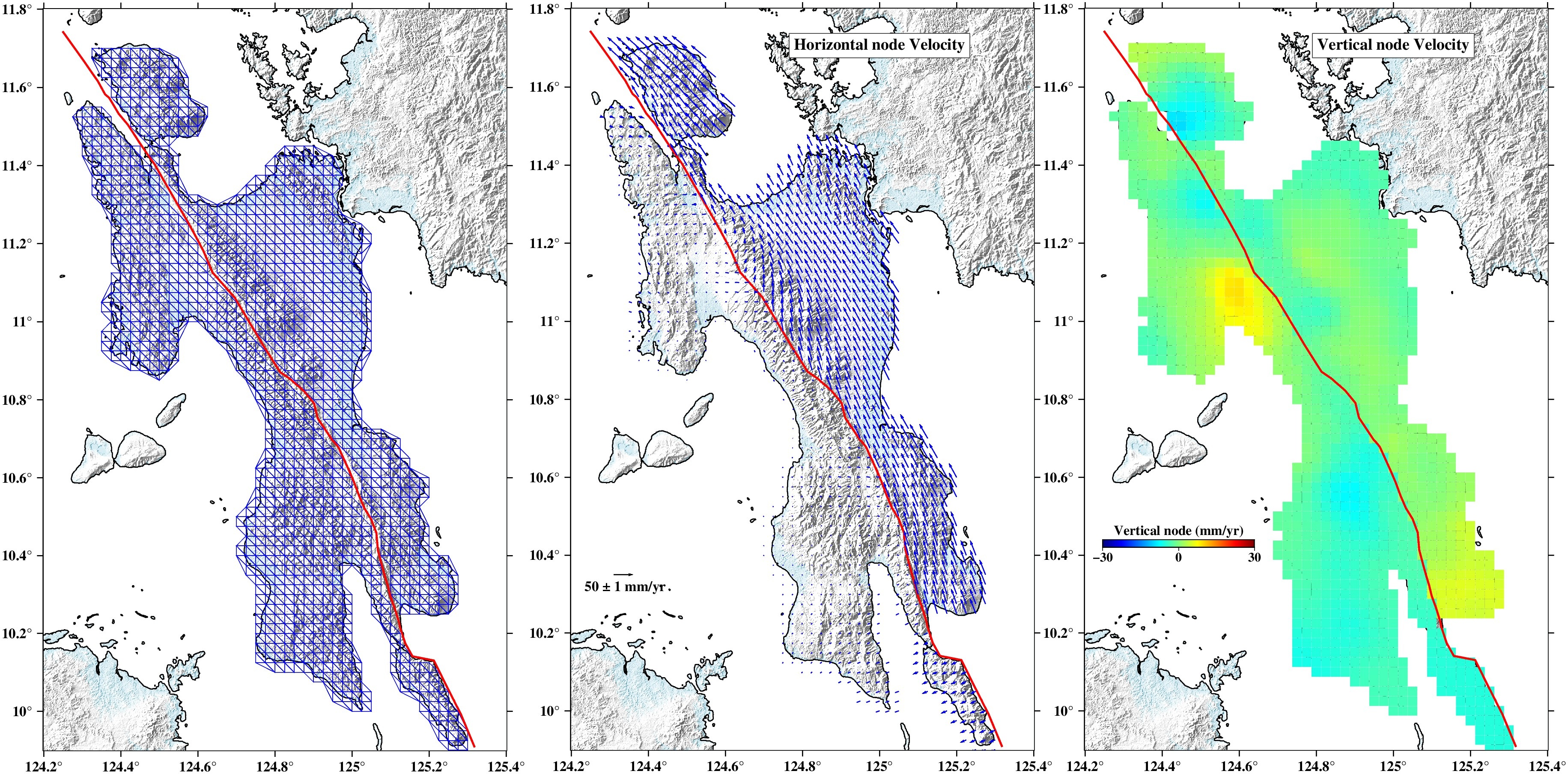
Combines GNSS and InSAR to recover surface velocity fields, used for interseismic inversion modeling.
Thick-Skinned Model
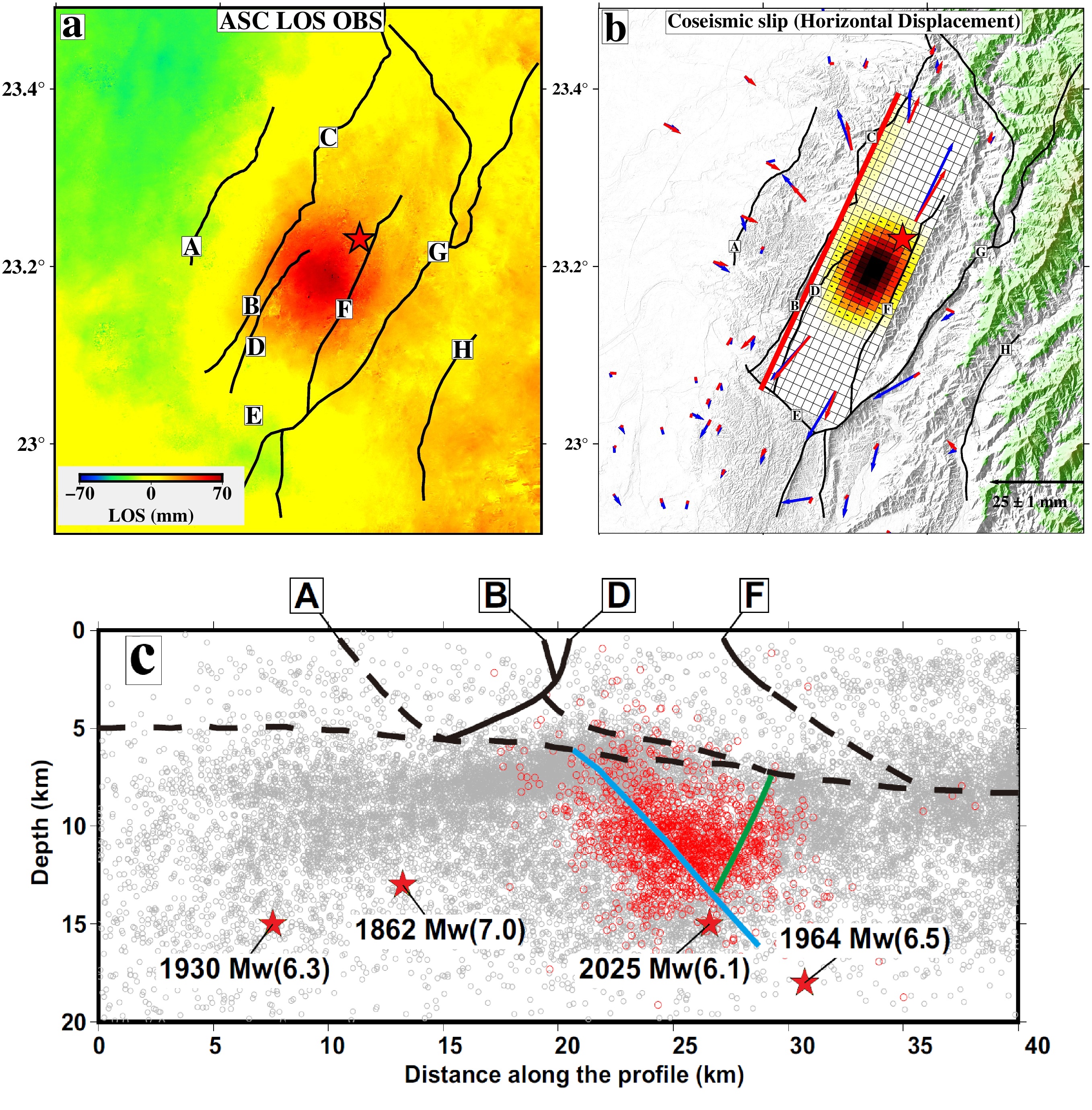
Highlights the role of basement-involved tectonics in crustal shortening beneath thin-skinned thrusts.
Creeping-Locking Model
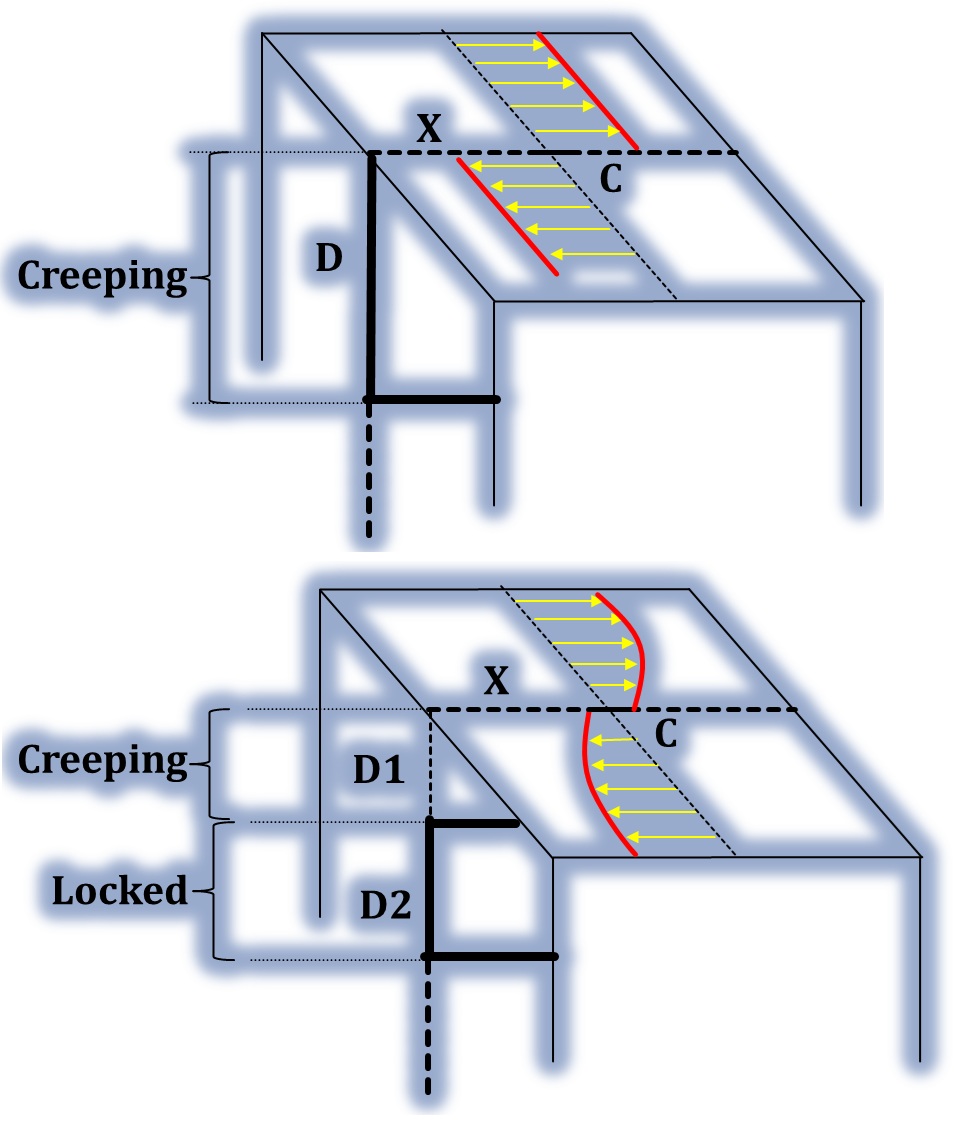
In the Leyte segment of the Philippine Fault, the Creeping–Locking model reveals a Parkfield-like behavior, where the fault exhibits surface creep while remaining locked at depth. Geodetic and InSAR data indicate that shallow portions of the fault accommodate slip aseismically, producing observable surface displacements without significant seismic activity. However, modeling suggests that deeper segments remain locked, accumulating strain over time. This vertical partitioning—creep above, locking below—implies the potential for future moderate to large earthquakes from deeper rupture, despite the apparent surface motion, making it crucial for accurate seismic hazard assessment.








